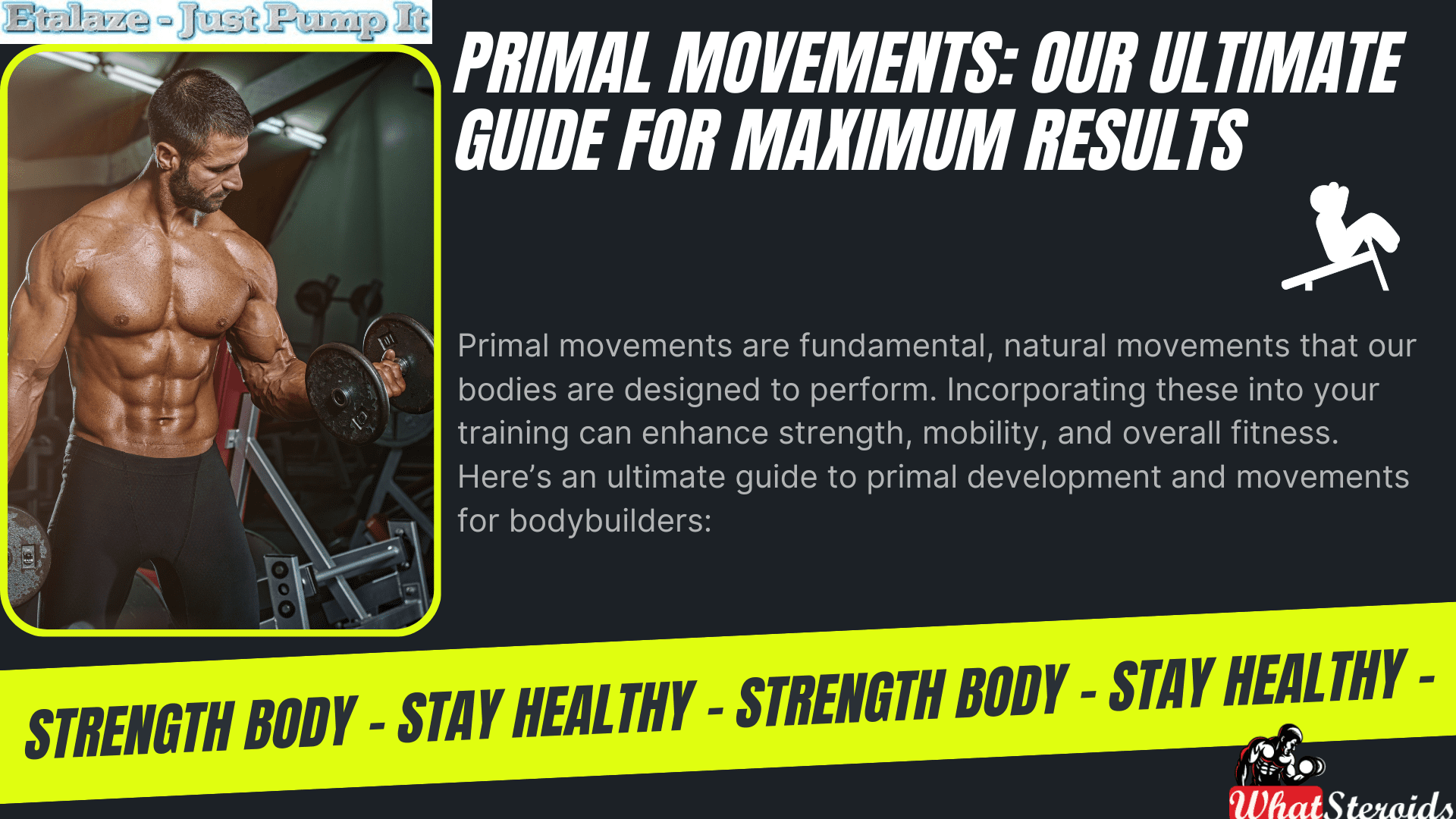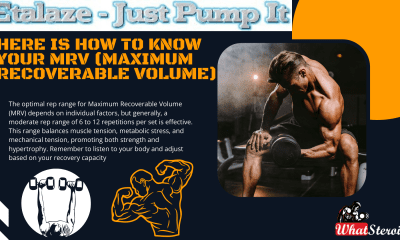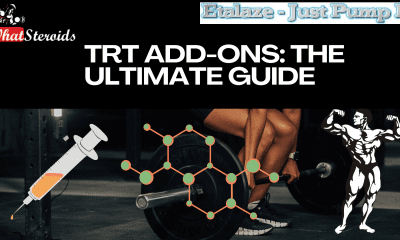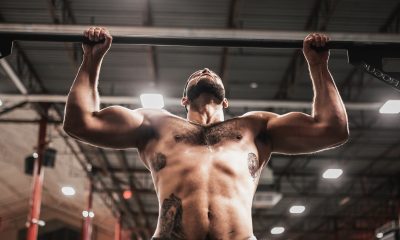Bodybuilding
Right Food Before And After Workout
Nutrition in bodybuilding is a very important aspect, which is often ignored, especially by beginner bodybuilders. If you go to the gym just to maintain you fit or with no special goal, then what you eat and when you eat should not bother you at all. Instead, if all your training are geared toward adding muscle mass, then nutrition is an aspect that has to be considered very seriously.
It is not an exaggeration if we said that nutrition is even more important than training itself. Why so? Because to muscle mass will increase only due to positive energy balance. Overwise, you can work hard in the gym, but no results in muscle growth will be achieved.
This is impossible physiologically. You have to understand only balanced and protein-rich food, that provided your body with a sufficient amount of carbohydrates can give you an increase in muscle mass. Positive energy balance does not suppose that you can eat everything. It especially refers to fact that calories you eat should exceed the number of calories you burn.
Also, is indicated to avoid saturated fat, for example, meat. If you want to add muscle mass you have to include in your diet supplements too. They are especially important because are free of fat, and sugar. Instead, supplements contain a lot of protein, carbohydrates, and vitamins.
So, a diet for building muscle mass have to be rich in protein fats and carbohydrates. However, be wise and take care do not turn your diet for building muscle mass into adding only fat. It is te to know that adding muscle mass is always associated with adding a percentage of body fat too. Our body tends to do fat reserves in case of a rich diet. So, building muscle mass and losing weights meantime is not possible.
Your goal has to be to gain minimum fat while adding big amounts of muscle mass. The best correlation between the percentage of muscle mass and fat should be three to one. But this report deeply depends on specific of metabolism of each person. There are people with a super fast metabolism, able to add maximum muscle mass with minimum fat, while others with a slow metabolism get more fat than muscle mass after following a rich diet.
Despite it may seem quite easy, bodybuilders have to be very careful about what they eat before and after the workout. It may seem that the protein-rich diet is the only you have to follow, but it is not the case. Setting up a special diet before and after a workout is very important since around this period your body requires high quality, fast digesting food for fast recovery and effective muscle growth. If you are enough smart to take advantages of this window, you can maximize your strength and muscle mass gains from each workout.
Must Read: 4 Meals with Most Protein to Take If You are Body Builder
Pre-workout Nutrition Plan

The first rule is to eat at least two hours before your workout. And we do not mean a very consistent food, but a medium food rich in protein and carbohydrates, and free of any type of fat. Less indicated are wheat products or sweets, while a portion of rice with chicken breast is an ideal choice. When it comes to what is the best food to eat before a workout you have to understand what you eat has not negatively affected your training.
All the food that you eat two hours before the workout has to be digested. This is the main reason why we eat namely two hours before the training, and not one hour or even half an hour. An exception to this rule is sports supplements, that are faster and more effectively digested by our bodies. Thus supplements can be taken even one hour before the training, as they fulfill blood with all useful amino acids.
And this is especially important because when exercising our body use those useful elements from blood, not from the stomach. Furthermore, the digestion process requires energy too, thus our body needs to pump blood not only to muscles but to stomach too and this lowered the efficiency of the workout.
Right before the workout, the stomach has to be free. Bear this in mind and never underestimate this aspect, as it directly affects your workout results. Another important detail of pre-workout routine is the intake of water. Only well-hydrated people feel great when exercises and get the most from their workouts.
Try to keep your water intake around half a liter of water during 1-2 hours before the workout. Avoid drinking water or juice when you eat or right after a meal, as these actions violate the secretion of gastric juice and thus interferes with the normal process of digestion. Ensure your fluid intake between meals.
Post-workout Nutrition:

If you want to build muscle mass, then you have to know that post-workout nutrition is even more important than what you eat before training. And this is not an exaggeration, as namely after training our body reach a high-level intensity and much faster absorb all necessary nutrients. And if your body doesn't receive all these nutrients, it begins to “eat” not only fat, but muscles mass as well.
The body needs the energy to recover, and it takes amino acids from anywhere just to recover faster. So, the gold rule of post-workout nutrition says always eat something right after the training. The best option would be a protein shake 15 minutes later the training end up. This is a very smart decision because it is very fast digested and gives our bodies with all necessary amino acids and carbohydrates.
Once you take your protein shake, then look further to have a full meal 30 minutes later. This is just a supplement and can not provide you with all the necessary supplements for a long time. The basis of your nutrition should be natural food, and this is the way it should be.
Since our main goal is to build muscle mass and we want to use food mainly for this purpose, you have to know that our bodies are most active for three hours after training. Namely in this interval, if the time you have to consume around 40% of daily food intake. All you eat after training will be used by your body for refuel and muscles repair.
Remember if you will not give your body what it needs, it will take itself, damaging your muscles. And this no bodybuilder wants! Water intake after the workout has the same importance as in before it. Try to drink the same amount of water, around 0,5 liters, after the workout for faster recovery. Increasing the water intake is a must if you sweat a lot when training or the water is hot or humid. During heavy sweating body loss big quantities of minerals and electrolytes.
That’s why consider adding to your post-workout fluid intake a sport drink rich in electrolytes. Is very important to have your meals on time. Never skip breakfast or other important meal of the day. Remember to eat regularly, since pre workout and post workout nutrition is more than what you eat before/after workouts.
Must Read: Post Workout Foods: Fill Your Plate With These Ones
Summarizing the above said, here is how a right pre and post workout nutrition plan should look like:
-Have a meal two hours before the workout. Avoid wheat products and sweets, and choose food rich in protein and carbohydrates. A portion of rice with chicken breasts is a very good idea.
-Water intake before a workout is very important too. Drink 0, 5 liters of water between meals during two hours before the workout.
-Right before the training your stomach has to be free. We need our body to rush blood only in muscles and do not lose energy for digesting food.
-During the workout, you can take some BCAA’s in order to help keep your body in an anabolic state.
-Fifteen minutes later after training drink a protein shake.
-Eat a solid protein and carbohydrate meal about an hour after your workout.
-Because of heavy sweating when training, drink enough water after the workout. Also, you can opt for a sports drink rich in minerals and electrolytes.
Despite it may seem quite simple, following the right diet before and after the workout can help you to get the maximum for your workout and build muscle mass fast. So, be wise, and take advantages of the right diet for big muscles!
Must Read: Incorporating The Correct Diet Plan That Complements Your Bodybuilding Cycle!
Bodybuilding
Top Video Games for Bodybuilders in 2024

There are several video games that can be great for bodybuilders, combining fitness and fun! Here are some of the best options:
Ring Fit Adventure (Nintendo Switch)
The game uses the Ring-Con and Leg Strap to guide you through various exercises and adventures. It's a fun way to get a full-body workout while playing a game.
Fitness Boxing 2: VR Boxing Remastered (PlayStation VR)
It offers a full-body boxing workout with a variety of punches and combos. It's a great way to improve your fitness while enjoying a virtual boxing experience.
Must Read: Marvel-Inspired Training Clothing on Amazon
Just Dance 2024
This popular dance game gets you moving to the beat with a variety of songs and dance routines. It's a fun way to burn calories and improve your coordination.
Zumba Fitness
Burn It Off (Nintendo Wii): This game offers a fun and energetic Zumba workout, perfect for those who enjoy dancing and want to get a good cardio workout.
Yoga for Beginners
If you're looking for a more relaxing workout, yoga games can help improve flexibility and reduce stress. Many of these games offer guided yoga sessions that you can follow along with.
Gym Tycoon
This game lets you build and manage your own gym, complete with various workout equipment and fitness classes. It's a great way to learn about different exercises and how to create effective workout routines.
The Sims 4: Fitness Stuff Pack
This expansion pack for The Sims 4 adds fitness equipment and activities to the game, allowing you to improve your character's fitness and join the athlete career.
Grand Theft Auto: San Andreas
While not a traditional fitness game, this classic game includes bodybuilding activities that can help your character gain muscle and improve fitness.
Knockout Home Fitness (Nintendo Switch)
This game offers a variety of boxing workouts that can help improve your strength and endurance.
Gym Simulator 24 (PC)
In this simulation game, you can build and manage your own fitness empire, creating workout routines and managing gym equipment.
Let's Get Fit (Nintendo Switch)
This game focuses on pure workouts, allowing you to set programs and follow along with digital trainers for a customized fitness experience.
Beat Saber (VR)
A popular VR game where you slash blocks to the beat of the music, providing an intense full-body workout.
Synth Riders (PlayStation VR)
This game combines freestyle dance and fitness, offering high-tempo tracks and multiplayer modes for a fun and energetic workout.
Yoga Master (PlayStation)
Designed by professional yoga coaches, this game offers a variety of yoga lessons and poses to improve flexibility and reduce stress.
Les Mills Bodycombat (PlayStation VR)
A martial arts-inspired workout game with a range of workout plans and coaching to keep you motivated.
OhShape Ultimate (PlayStation VR)
This game provides a full-body cardio workout with six sessions and two difficulty levels, designed to engage every part of your body.
These games offer a mix of cardio, strength, and flexibility workouts, making them great additions to your fitness routine.
Related Article: Supplemental Breast Milk for Bodybuilders
Bodybuilding
2nd Edition of Natural Bodybuilding Competition Facts

Natural bodybuilding competitions are designed to promote and celebrate athletes who build their physiques without the use of performance-enhancing drugs. These events emphasize fair play, health, and the natural development of muscle mass and definition.
The second edition of natural bodybuilding competitions has gained momentum globally, particularly focusing on drug-free athletes. These competitions are hosted by various organizations like the INBA/PNBA (International Natural Bodybuilding Association/Professional Natural Bodybuilding Association) and OCB (Organization of Competitive Bodybuilders).
In 2024, several notable events have been planned, including the INBA Natural Universe and INBA World Cup, both of which emphasize natural bodybuilding through rigorous drug testing policies. These events aim to showcase competitors who adhere to strict drug-free protocols, and winners often earn pro cards allowing them to compete in higher-level professional competitions.
These competitions focus on categories like men's bodybuilding, classic physique, and women's figure and bikini, among others. Athletes undergo polygraph and urine tests to ensure compliance with natural bodybuilding standards. The winners often receive medals, trophies, or pro status
Bodybuilding
Primal Movements: Our Ultimate Guide for Maximum Results

Primal movements are fundamental, natural movements that our bodies are designed to perform. Incorporating these into your training can enhance strength, mobility, and overall fitness. Here’s an ultimate guide to primal development and movements for bodybuilders:
 Buy Cut Long 300 by Dragon Pharma
Buy Cut Long 300 by Dragon Pharma
Understanding Primal Movements
Primal movements are basic, functional movements that mimic the natural actions humans have performed for thousands of years. These movements are essential for developing a strong, balanced, and resilient body. They can be categorized into seven primary patterns:
Related Article: How Much Do You Know About B-AET? A Fat Burner You’ve Been Missing
- Push
- Pull
- Squat
- Lunge
- Hinge
- Rotate
- Gait (Locomotion)
The Seven Primal Movement Patterns
Push
Description: Involves moving a weight or resistance away from your body.
Examples: Push-ups, bench press, overhead press.
Muscles Worked: Chest, shoulders, triceps.
Pull
Description: Involves drawing a weight or resistance towards your body.
Examples: Pull-ups, rows, bicep curls.
Muscles Worked: Back, biceps, forearms.
Squat
Description: A fundamental lower-body movement where you lower your hips from a standing position and then stand back up.
Examples: Bodyweight squats, barbell squats, goblet squats.
Muscles Worked: Quadriceps, hamstrings, glutes, calves.
Lunge
Description: A single-leg movement that involves stepping forward, backward, or to the side and lowering your hips.
Examples: Forward lunges, reverse lunges, lateral lunges.
Muscles Worked: Quadriceps, hamstrings, glutes, calves.
Hinge
Description: Involves bending at the hips while keeping a neutral spine.
Examples: Deadlifts, kettlebell swings, hip thrusts.
Muscles Worked: Hamstrings, glutes, lower back.
Rotate
Description: Involves twisting or rotating the torso.
Examples: Russian twists, woodchoppers, cable rotations.
Muscles Worked: Obliques, abdominals, lower back.
Gait (Locomotion)
Description: Involves movements that propel the body forward.
Examples: Walking, running, crawling, bear crawls.
Muscles Worked: Full body, with emphasis on legs and core.
Benefits of Primal Movements
Functional Strength: Primal movements enhance your ability to perform everyday tasks efficiently and safely.
Improved Mobility: These movements promote flexibility and range of motion, reducing the risk of injury.
Balanced Development: By working multiple muscle groups, primal movements ensure balanced muscle development.
Core Stability: Many primal movements engage the core, improving overall stability and strength.
Increased Caloric Burn: Compound movements like these burn more calories, aiding in fat loss and conditioning.
Incorporating Primal Movements into Your Training
Warm-Up: Start with dynamic stretches and light cardio to prepare your body.
Compound Exercises: Focus on compound exercises that incorporate multiple primal movements.
Progressive Overload: Gradually increase the weight or resistance to continue making gains.
Variety: Mix up your routine to prevent plateaus and keep your workouts interesting.
Recovery: Ensure adequate rest and recovery to allow your muscles to repair and grow.
Sample Primal Movement Workout
Warm-Up: 5-10 minutes of light cardio and dynamic stretching.
Workout:
Push: 3 sets of 10-12 reps of push-ups or bench press.
Pull: 3 sets of 10-12 reps of pull-ups or rows.
Squat: 3 sets of 10-12 reps of bodyweight or barbell squats.
Lunge: 3 sets of 10-12 reps per leg of forward or reverse lunges.
Hinge: 3 sets of 10-12 reps of deadlifts or kettlebell swings.
Rotate: 3 sets of 15-20 reps of Russian twists or cable rotations.
Gait: 3 sets of 30-60 seconds of bear crawls or sprints.
Cool-Down: 5-10 minutes of static stretching and deep breathing exercises.
1. Warm-Up and Mobility Drills
Start your workout with primal movement-based warm-ups to prepare your body. For example:
- Dynamic stretches: Incorporate lunges with a twist, leg swings, and arm circles.
- Mobility drills: Include exercises like hip circles, cat-cow stretches, and thoracic rotations.
2. Compound Exercises
Add primal movements as the core of your workout. Here’s how you can structure it:
- Push Day: Combine bench presses with push-ups.
- Pull Day: Mix pull-ups with rows.
- Leg Day: Integrate squats and lunges with deadlifts.
3. Supersets and Circuits
Create supersets or circuits that include primal movements:
- Superset Example: Pair squats with pull-ups or push-ups with lunges.
- Circuit Example: Rotate through exercises like kettlebell swings, bear crawls, and Russian twists with minimal rest.
4. Functional Training Days
Dedicate one or two days a week to functional training focused on primal movements:
Sample Functional Workout
-
- Warm-Up: 5 minutes of dynamic stretching.
- Circuit: 3 rounds of:
- 10 push-ups
- 10 pull-ups
- 15 squats
- 10 lunges per leg
- 15 kettlebell swings
- 20 Russian twists
- 30 seconds of bear crawls
- Cool-Down: 5 minutes of static stretching.
5. Active Recovery
Use primal movements on active recovery days to promote mobility and flexibility:
- Activities: Light yoga, walking, or gentle bodyweight exercises like lunges and squats.
6. Progressive Overload
Gradually increase the intensity of primal movements by adding weights or resistance bands:
- Example: Start with bodyweight squats, then progress to goblet squats, and eventually barbell squats.
7. Listen to Your Body
Pay attention to how your body responds to these movements and adjust accordingly:
- Modify: If a movement feels too challenging, modify it to suit your fitness level.
- Rest: Ensure you’re getting adequate rest and recovery to prevent overtraining.
Read More: Cellular Alchemy to Restore Testosterone Levels
Sample Weekly Routine for Primal Movements
Monday: Push Day
- Bench Press
- Push-Ups
- Overhead Press
Tuesday: Pull Day
- Pull-Ups
- Rows
- Bicep Curls
Wednesday: Leg Day
- Squats
- Lunges
- Deadlifts
Thursday: Functional Training
- Circuit of primal movements (as outlined above)
Friday: Active Recovery
- Light yoga or walking
Saturday: Full-Body Workout
- Combination of push, pull, squat, and hinge movements
Sunday: Rest Day
By incorporating these primal movements, you’ll enhance your functional strength, mobility, and overall fitness. If you have any specific goals or need further customization, feel free to ask! Happy training.
For optimal performance in primal movements before a bodybuilding competition, consider these supplements:
Pre-Workout Supplements: These can provide energy and enhance performance. Look for products containing creatine, nitric oxide stimulators, and caffeine.
Post-Workout Supplements: Essential for recovery, including protein powders, BCAAs (Branched-Chain Amino Acids), and multivitamins.
Fat Burners and Metabolizers: These can help in reducing body fat while maintaining muscle mass. Ingredients like green tea extract and L-carnitine are popular.
Adaptogens: Supplements like ashwagandha and rhodiola rosea can help manage stress and improve endurance.
Conlusion
Primal movements, which include squatting, lunging, hinging, twisting, walking, pushing, and pulling, benefit from a strong foundation of functional strength and mobility. Ensuring your body is well-nourished and recovered will help you perform these movements effectively.
Incorporating primal movements into your bodybuilding routine can lead to significant improvements in strength, mobility, and overall fitness. By focusing on these fundamental patterns, you can build a well-rounded, resilient body that performs well both in and out of the gym.
-

 Steroids2 years ago
Steroids2 years agoVOX Testing: Why Bodybuilders Must Have It Tested Regularly
-

 Steroids2 years ago
Steroids2 years agoShavers and Other Body Grooming Equipment for Bodybuilders In 2023
-

 Steroids2 years ago
Steroids2 years agoChatGPT and Other Avenues to Find Great Bodybuilding Coaches
-

 Steroids2 years ago
Steroids2 years agoBest Oil Recommendations Before Competition for Subtle Shimmer
-

 Steroids2 years ago
Steroids2 years agoPowerlifting Vs Power Building: Find Out the Big Difference and When to Shift Between the Two
-

 Nutrition1 year ago
Nutrition1 year agoEverything Nutritional Food: What’s Too Much Or Too Little
-

 Beginners1 year ago
Beginners1 year agoTren Cycle for Beginners
-

 Anabolic Steroids1 year ago
Anabolic Steroids1 year agoLegality of Anabolic Steroids In Latin America
-

 Bodybuilding Products9 months ago
Bodybuilding Products9 months agoTelmisartan In Bodybuilding: An Expert’s Advice
-

 Bodybuilding10 months ago
Bodybuilding10 months agoList of FDA-Approved Peptides
-

 Bodybuilding1 year ago
Bodybuilding1 year agoCompetition Prep Cycle for Pro Bodybuilders
-

 Anabolic Steroids7 months ago
Anabolic Steroids7 months agoHow Much Do You Know About B-AET? A Fat Burner You’ve Been Missing
-

 Bodybuilding1 year ago
Bodybuilding1 year agoChia Seeds in A Bodybuilder’s Diet: An Expert’s Advice
-

 Steroids10 months ago
Steroids10 months agoTrenbolone: Why it Remains A Beast In the Market
-

 Anabolic Steroids1 year ago
Anabolic Steroids1 year agoNatural Steroids for Bodybuilding
-

 Anabolic Steroids12 months ago
Anabolic Steroids12 months agoStart The New Year Strong With These Tips
-

 Product Reviews7 months ago
Product Reviews7 months agoTop Vitamins for Skin Health
-

 Beginners1 year ago
Beginners1 year agoCalisthenics: Secret to Building A Better Upper and Middle Body
-

 Bodybuilding12 months ago
Bodybuilding12 months agoUnique Things That Have Redefined Mr Olympia Over The Years
-

 Steroids7 months ago
Steroids7 months agoMajor Bodybuilding Peptides Explained
-

 Bodybuilding6 months ago
Bodybuilding6 months agoHere Is How To know Your MRV (Maximum Recoverable Volume)
-

 Bodybuilding Products7 months ago
Bodybuilding Products7 months agoTRT Add-ons: The Ultimate Guide
-

 Bodybuilding6 months ago
Bodybuilding6 months agoHormone Replacement Therapy (TRT) Cycle Guide
-

 Bodybuilding9 months ago
Bodybuilding9 months agoHow Much Is Too Much Cardio? Understanding Heart Rate Zones
-

 Steroids8 months ago
Steroids8 months agoAnadrol Cycle: Benefits, Doses, Alternatives, etc.

















 Click here to buy 1-Test Cyp/DHB 100 by Dragon Pharma
Click here to buy 1-Test Cyp/DHB 100 by Dragon Pharma












